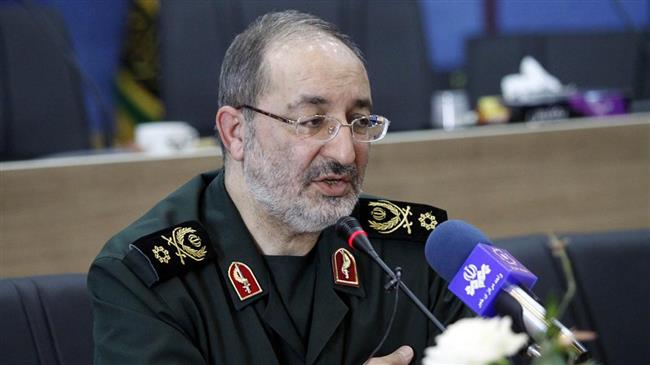Iran will not talk missiles unless US, Europe destroy nukes, long-range missiles: Commander


A senior Iranian military commander says the Islamic Republic will hold no negotiations over its missile program unless the United States and Europe dismantle their nuclear weapons and long-range missiles.
“What Americans say out of desperation with regards to limiting the Islamic Republic of Iran’s missile capabilities is an unattainable dream resulting from their regional failures and defeats,” Deputy Chief of Staff of Iran’s Armed Forces Brigadier General Massoud Jazayeri said on Saturday.
He added that if the development of Iran’s defense might was to have been affected by certain political negotiations, the country would not have been able to put the United States in such a position of weakness.
Iranian officials have repeatedly warned that the country’s missile program is not open to any negotiations amid US President Donald Trump’s constant efforts to link Iran’s missile program to the 2015 multilateral nuclear agreement, officially known as the Joint Comprehensive Plan of Action (JCPOA).
Iran and the five permanent members of the United Nations Security Council – the US, France, Britain, Russia and China – plus Germany signed the nuclear agreement on July 14, 2015 and started implementing it on January 16, 2016.
Under the JCPOA, Iran undertook to put limits on its nuclear program in exchange for the removal of nuclear-related sanctions imposed against Tehran.
Trump has repeatedly described the JCPOA, which was negotiated under his predecessor Barack Obama, as “the worst and most one-sided transaction Washington has ever entered into,” a characterization he often used during his presidential campaign, and threatened to tear it up.
The US has repeatedly claimed that Iran’s missile program is in violation of United Nations Security Council Resolution 2231, which endorses the JCPOA.
Speaking at a press conference in the presence of Iranian and foreign reporters in Tehran in February, Iran’s President Hassan Rouhani said the Islamic Republic would never hold negotiations either about the JCPOA or its defensive missile program.
The Iranian president says Tehran will not hold negotiations either about the JCPOA or its defensive missile program.
“We never regard other issues linked to the JCPOA. The JCPOA is a seven-sided agreement …The JCPOA is an international agreement which has been endorsed by Security Council Resolution 2231,” Rouhani said.
Iranian Foreign Ministry Spokesman Bahram Qassemi also said on February 15 that Iran would not permit other countries to undermine its defense might while they were themselves supplying regional countries with lethal weapons.
Iran says it will not allow other countries to undermine its defense might while they are simultaneously supplying regional states with lethal arms.
The Islamic Republic “will never allow others to talk about or make efforts based on double standards to undermine the defense and deterrence power of the pacifist Iran,” he said.
Qassemi’s remarks came two days after French President Emmanuel Macron said Iran’s ballistic missile program must be placed under international surveillance.
Macron also claimed that the surveillance was “indispensable for the security of the region and so we need a mechanism of sanctions and control adapted to that.”









